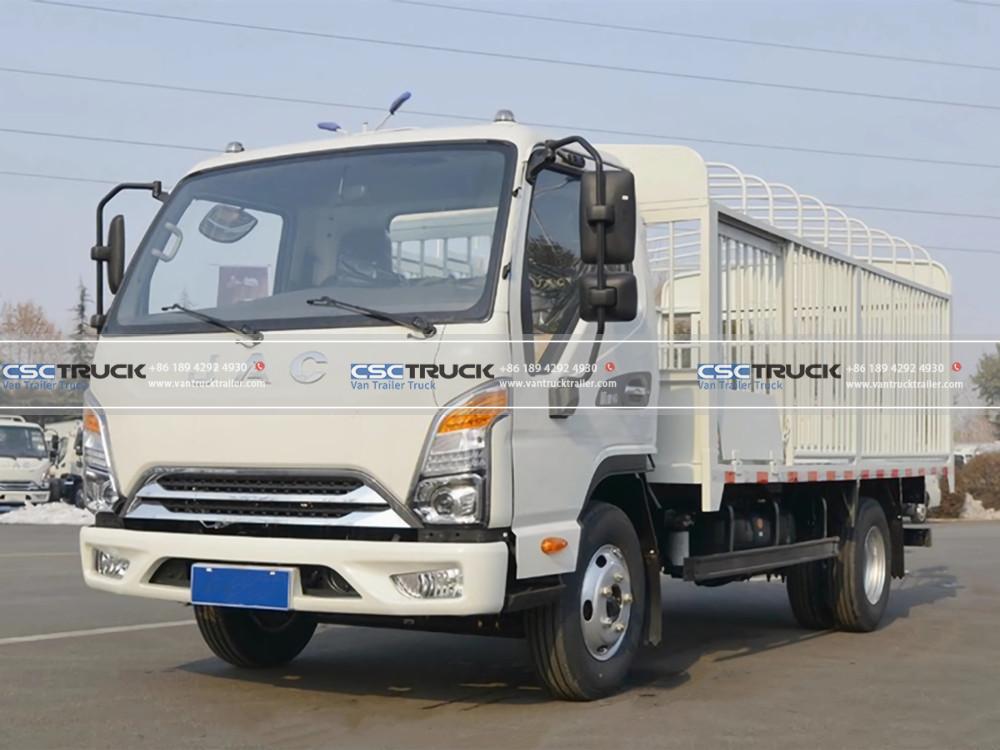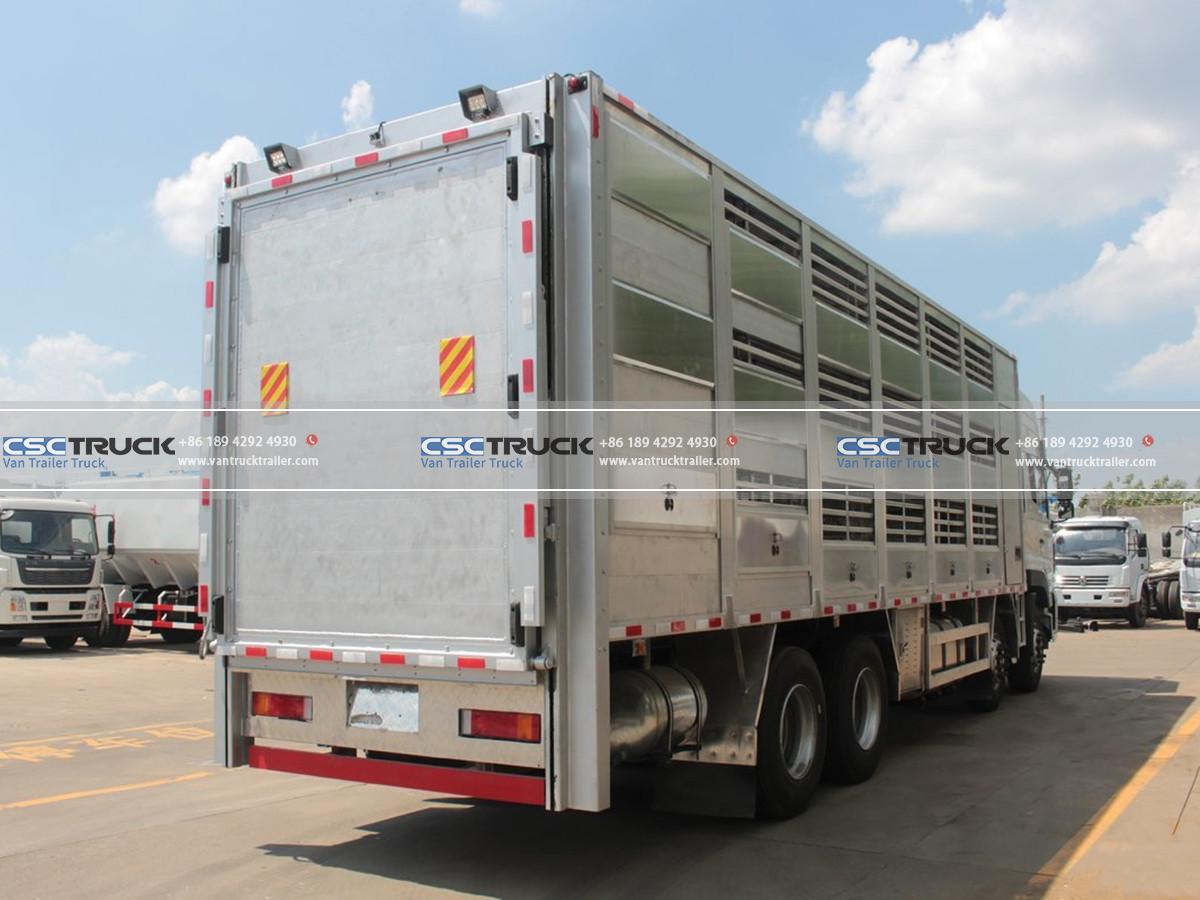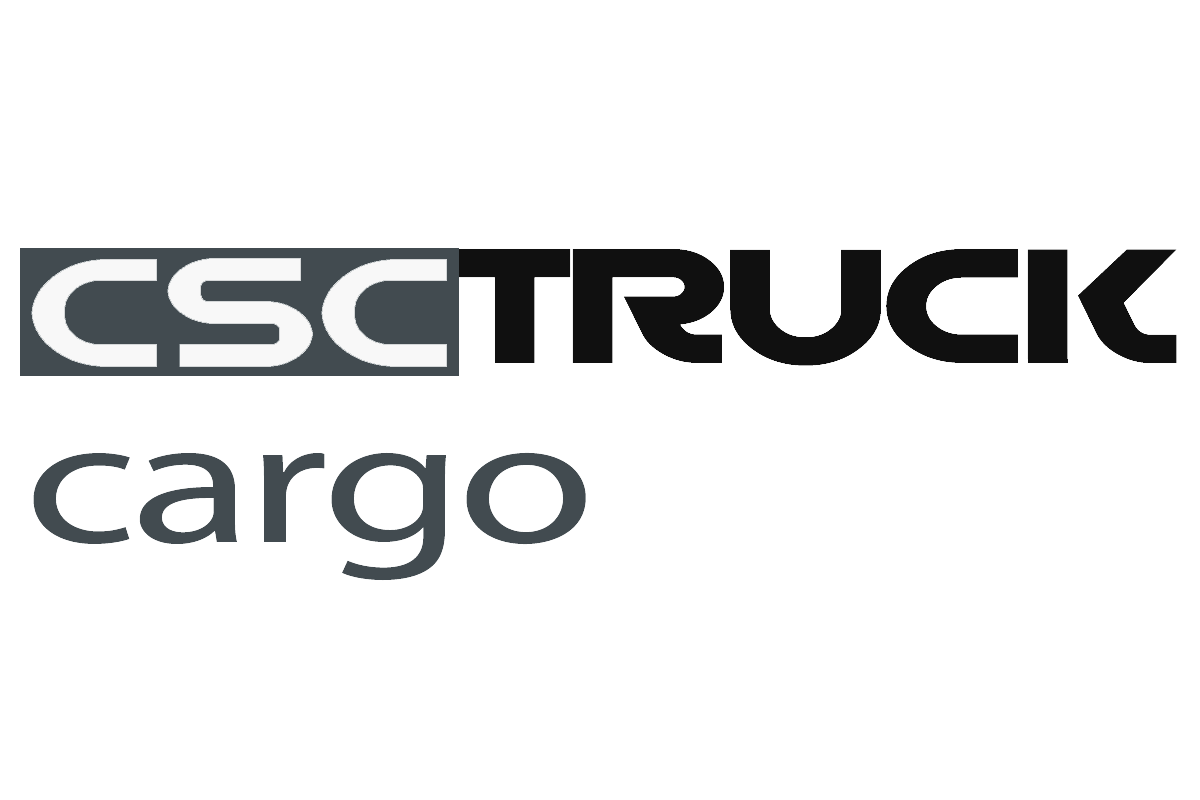Transporting livestock is a complex task that requires careful consideration of the animals’ welfare, safety, and comfort throughout the journey. Livestock trucks, specifically designed for the task, offer a reliable and secure way to move animals from farms to markets, slaughterhouses, and other destinations. These vehicles are equipped with specialized features that ensure animals are protected, well cared for, and transported in the most humane manner possible. In this article, we will explore how livestock trucks ensure the safety and comfort of animals during transportation and the various factors that make them indispensable for the agricultural industry.
1. Design Features of Livestock Trucks: Ensuring Animal Comfort
Livestock trucks are specifically engineered to meet the unique needs of animal transport. Unlike standard cargo trucks, which are designed for general freight, livestock trucks come with a variety of design features aimed at ensuring the comfort and safety of animals. These trucks are built with solid, durable materials and structures to withstand the demands of carrying livestock over long distances, sometimes in harsh weather conditions.
The first key design aspect of livestock trucks is the ventilation system. Proper airflow is crucial to maintaining a comfortable temperature inside the truck and ensuring that animals do not become overheated or stressed. Most livestock trucks are equipped with side vents or adjustable windows that allow air to circulate freely within the compartment. This is especially important during the warmer months, as high temperatures can lead to dehydration, exhaustion, and even death in animals, particularly those with thick coats.
In addition to ventilation, the flooring of a livestock truck is carefully designed to prevent injury and maximize comfort. The floors are often made of non-slip, durable materials such as rubber or specialized mats to minimize the risk of slipping or falling, which can be harmful to animals, especially during transit. A stable and non-slip surface helps the animals remain steady while traveling, reducing stress and ensuring their well-being.

2. Temperature Control: Keeping Animals Comfortable
One of the biggest challenges in transporting livestock is managing the temperature inside the truck. Livestock trucks are designed to maintain a comfortable internal climate regardless of the external weather conditions. This is particularly critical for long-distance travel, as temperature extremes can severely impact an animal’s health.
Many modern livestock trucks incorporate temperature control systems similar to those found in a refrigerated truck. While a refrigerated truck is generally used for perishable goods that require specific cold storage, livestock trucks employ these technologies in a more animal-friendly manner. These trucks are equipped with climate-control systems that regulate the internal temperature to prevent overheating or freezing. In cold weather, heating systems are employed to maintain warmth, while cooling systems provide relief during the summer months.
Proper temperature regulation not only ensures the comfort of animals but also prevents the spread of disease. Animals that are subjected to extreme temperature fluctuations are more susceptible to stress, which can weaken their immune system and lead to illness. By maintaining a consistent, comfortable temperature, livestock trucks help keep animals healthy and prevent unnecessary stress during transport.
3. Safety Features: Protecting Animals During Transit
The safety of animals during transport is a primary concern when designing livestock trucks. These vehicles are equipped with a range of safety features that help to prevent injury, reduce stress, and ensure the overall well-being of the animals throughout the journey. Unlike a standard cargo truck, which is not designed for the specific needs of animal transport, livestock trucks are equipped with customized safety features to safeguard the animals.
One of the most important safety features is the compartmentalization of the transport area. Depending on the size and type of livestock being transported, the truck is divided into separate sections or pens. These partitions are designed to keep the animals from moving around too much, which helps prevent injury from overcrowding or excessive movement. Properly spaced enclosures ensure that animals have enough room to stand or lie down comfortably while preventing them from injuring themselves or each other.
The height of the truck is another important consideration. Livestock trucks are generally built higher than typical freight trucks to allow animals enough space to stand and move around comfortably. Overcrowding is a significant issue in the transportation of livestock, and taller trucks with adequate space minimize this risk.
Additionally, safety rails and gates inside the truck help prevent animals from escaping or injuring themselves. These features keep the animals secure while ensuring they have enough room to breathe and remain relatively calm during the journey.
4. Loading and Unloading: Ensuring a Smooth Process
The loading and unloading process plays a crucial role in the overall safety and comfort of livestock during transportation. A livestock truck must be equipped with features that allow animals to enter and exit the vehicle with minimal stress and risk of injury.
To ensure safe loading, many livestock trucks are equipped with low, sloped ramps that make it easy for animals to climb into the vehicle. This is particularly important for cattle, pigs, and other large animals that may have difficulty navigating steep ramps. The ramps are often coated with non-slip material to prevent the animals from slipping while climbing. This design feature minimizes the risk of falls, which could result in injuries.
During unloading, it is equally important to ensure that the animals are not rushed or scared, as this can lead to accidents or injury. Some livestock trucks are equipped with hydraulic lift systems that help facilitate a smooth unloading process, while others have specialized unloading chutes to direct the animals into holding pens. The goal is to minimize stress and ensure that animals can be unloaded safely without harm.
Many operators also use trained handlers and careful communication when loading and unloading, as the human element plays a key role in minimizing stress and injury. Proper training and protocols are essential for ensuring that livestock handling during these stages is as smooth and safe as possible.

5. Regulations and Standards: Ensuring Compliance with Welfare Guidelines
The transportation of livestock is regulated by various animal welfare laws and guidelines, which vary by country but all share a common focus on ensuring that animals are treated humanely during transit. In most regions, the welfare of animals in transit is overseen by government agencies, and livestock trucks must comply with strict standards to meet regulatory requirements.
Livestock trucks are built to adhere to these regulations, which cover everything from the maximum duration of transport to the space allowance per animal. For example, regulations may specify how much space each animal needs to prevent overcrowding, which can cause undue stress and injury. Additionally, the transportation of livestock is often subject to regulations regarding feeding and watering schedules, as animals must be given sufficient breaks during long trips to prevent dehydration and fatigue.
The use of livestock trucks that comply with these guidelines helps ensure that the transportation process aligns with animal welfare standards. Operators of these trucks must be familiar with the rules surrounding the transport of animals, ensuring they follow ethical practices and legal requirements at every stage of the journey.
Livestock trucks are indispensable vehicles in ensuring that animals are transported safely, comfortably, and in compliance with regulatory standards. From their specialized design features, such as ventilation systems and non-slip flooring, to the incorporation of temperature control systems, these vehicles provide the essential conditions for safe animal transport. Moreover, safety features, compartmentalization, and the thoughtful design of loading and unloading processes ensure that the animals’ journey is as stress-free as possible. By adhering to strict welfare regulations and integrating thoughtful design and technology, livestock trucks play a crucial role in maintaining the health and well-being of animals during transit.

